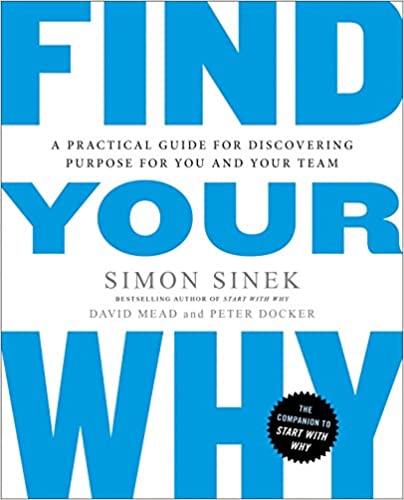A Book Review by Soundview
In 2009, leadership consultant and best-selling author Simon Sinek published Start With Why, which introduced the concept of the “Golden Circle.” According to this concept, every organization and every career operates on three levels: what we do, how we do it and why we do it. The three levels are illustrated by circles: a large what circle, with a smaller how circle within it, and at the heart of these two circles, the why circle. While most people plunge through their lives focusing on the what and the how, they rarely take the time, the authors write, to identify the one purpose, cause or belief that is at the heart of who they are.
With co-authors David Mead and Peter Docker, Sinek has produced a new book, Find Your Why: A Practical Guide for Discovering Purpose for You and Your Team, which is intended as the practical how-to companion workbook to Start With Why.
Three General Steps
The authors first present a general overview of the three-step process for finding your Why. This 3-step process is:
- Gather stories and share them
- Identify themes
- Draft and refine a Why Statement.
“At its core, the Why is an origin story,” the authors explain. “By looking to our past and teasing out the most significant threads — the experiences we’ve had, the people we’ve been influenced by, the lives we’ve touched and the highs and lows we’ve faced — we can identify patterns.” The authors recommend gathering, at a minimum, 10 of the most specific and impactful memories you can think of, choosing five or six of the memories that made the biggest difference in your life, and then sharing these selected memories in as much detail as possible.
Themes Lead to the Statement
“As you pan for your stories and share them,” the authors continue, “themes will start to emerge, insights about yourself and your team that you may never have expressed before.” Eventually, one or two of those themes, they write, will stand out as the most important in defining who you are. Those one or two themes become the foundation of the Why Statement, which according to the authors takes the following form:
TO ______________________________
SO THAT ________________________.
The first blank identifies the contribution that you make in the lives of others, and the second the impact of that contribution. Sinek’s Why Statement, for example, is, “To inspire people to do the things that inspire them so that, together, we can change the world.”
A Second Set of Eyes and Ears
The three steps just described are at the heart of the finding your Why process. In subsequent chapters, the authors lay out the detailed how-to steps, which can range from choosing the right meeting spaces to different story-gathering methods, required for individuals and groups to find their Why. They characterize groups as “tribes,” which they define as “any group of people who come together around a common set of values and beliefs.”
What is perhaps lost in the quick three-step overview above is the importance of sharing. In the detailed chapters, the sharing element comes to the forefront. For individuals, sharing entails finding a partner who becomes an invaluable second set of eyes and ears. “Listening to your stories, your partner can offer a perspective that is nearly impossible to see for yourself,” the authors explain. For groups, the facilitator becomes the key person to help the group interpret their stories. The authors provide long and detailed partner and facilitator guidelines, highlighting the importance of these roles.
Find Your Why ends with a chapter on Hows and a chapter of living the Why and putting it into practice. The main focus of this book, however, is helping individuals and groups find their why; in so doing, it completely fulfills the promise of its subtitle, to be “a practical guide for discovering purpose for you and your team.” For many readers, Find Your Why will be an exceptional voyage of discovery.
________________________________________

Taylor Berrett is a Contributing Writer at Soundview. He is also a freelance writer, editor, and host of the podcast Alone in a Room.





